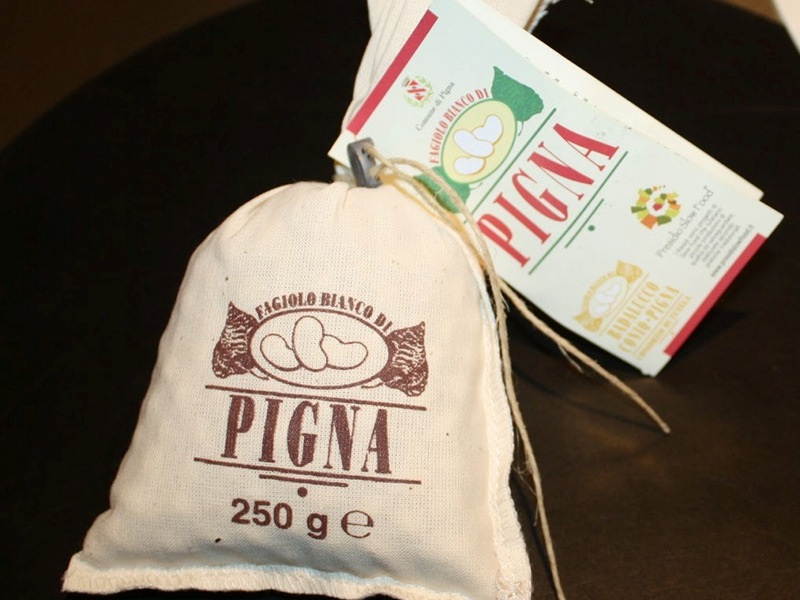Pigna White Bean
Characteristics:
The Pigna White Bean, together with the Badalucco and Conio (towns near Imperia) Beans, is one of the Slow Food Presidia within the Park territory. This plant reached Liguria in the 17th century from Spain through the ships coming from the New World by way of Provence, and it found here its ideal habitat. On the dry terraced lands of the hinterland the most suitable areas for the plantations are situated in the highest places, where lands are properly drained and water comes from the springs and is very chalky and rich in mineral salts.
The Pigna white bean has been present in the territories of Pigna, Buggio and Castelvittorio for more than 300 years.
The cultivated areas are situated in the areas called "abrigu" in dialect, that means "exposed to the sun", where the hills have gentle slopes suitable for cultivation.
They say that the territories where this bean is usually cultivated has been used since the Roman period.
Processing:
The production area is located at an altitude between 300 m and 800 m above sea level, at the foot of the Ligurian Alps (Mounts Toraggio and Pietravecchia) in small plots whose access is often difficult for the usual mechanical means. The cultivations are usually located near small water courses in order to make the irrigation procedures easier. Irrigation is realized in a traditional way, with a natural flow by means of small canals, or with modern techniques by means of sprinklers.
The annual production ranges between 4000 and 4500 kilograms. The sowing, organized in rows, is carried out in May, while for the harvesting farmers have to wait until September, when the legume is dried. Legumes belong to the climbing plants: the Pigna variety is pinkish, almost beige, with a thin outer hull, egg-shaped and smaller than the Conio and Badalucco beans. Their consistency is pulpy, their texture soft and delicate, their taste recalls that of chestnut and fresh nuts.
They are very good when dried, but they can also be tasted fresh in the winter dishes. The best way to eat them is to stew them and season them with extra-virgin olive oil.
Their preparation requires a long time because they need a night-long soaking. Then they have to be stewed in water for 35 minutes after the water starts to boil, with garlic, laurel leaves, some spoons of oil and salt at the end. They are ready when the beans are tender but compact and do not melt. In the Pigna territory this typical dish is served with goat meat.
Production places:
Pigna (principal town and part of Buggio), Castelvittorio








